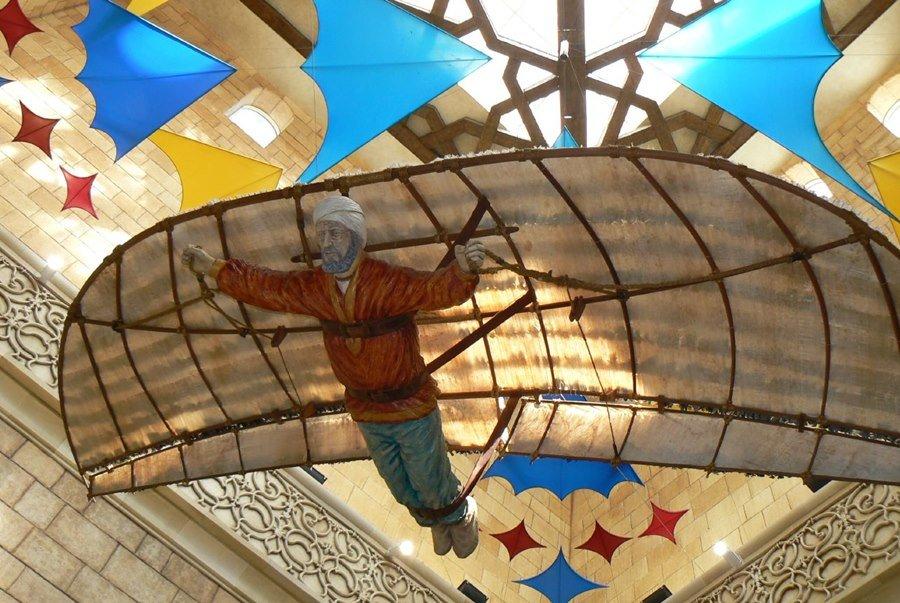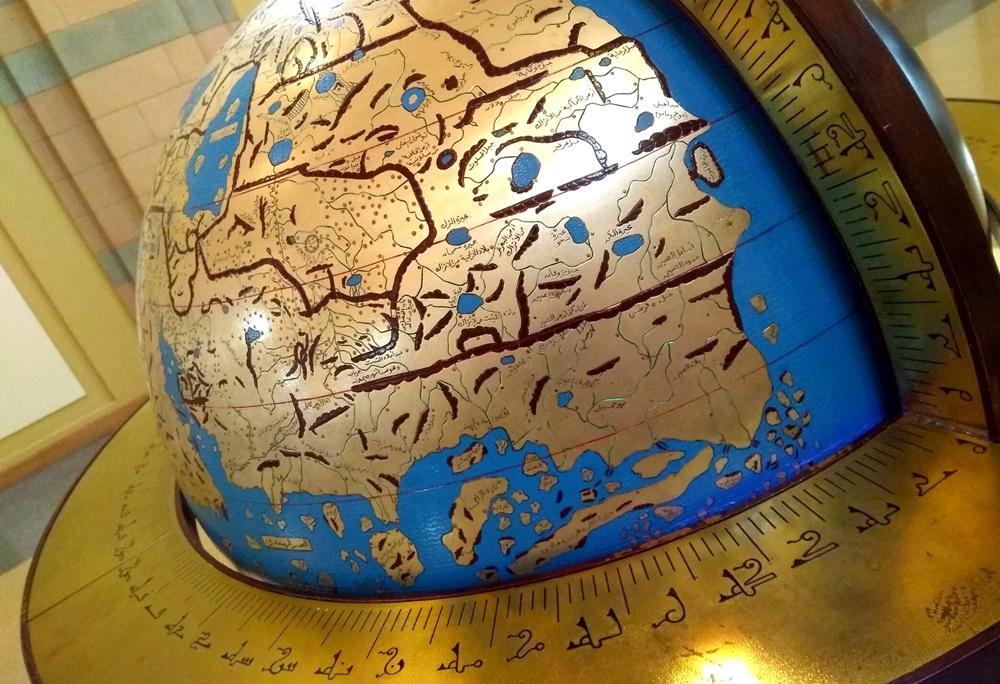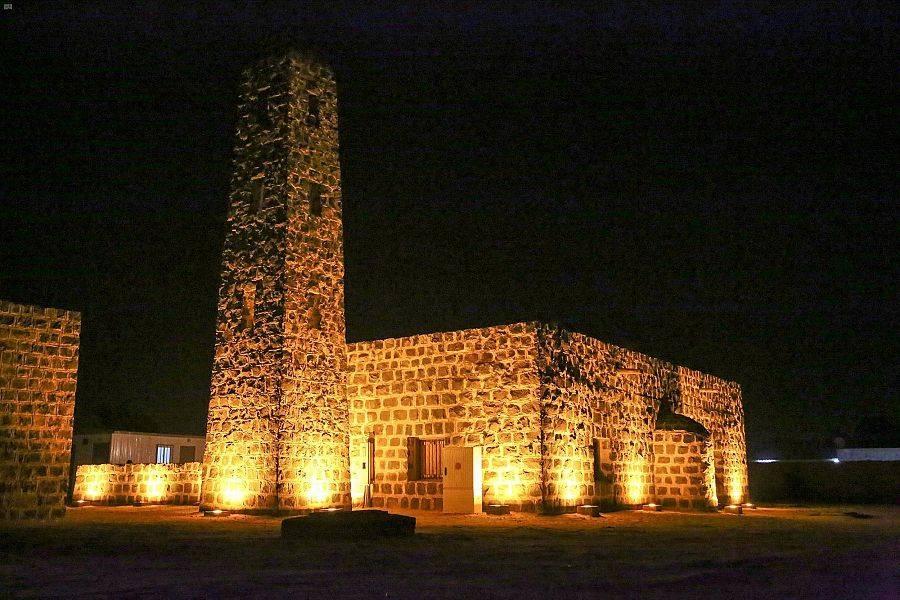Model of Abbas ibn Firnas’s flying machine at Ibn Battuta mall, Dubai
IN 9th century Muslim Spain, more than a thousand years ago, on a hill in Cordoba, Abbas bin Firnas, boldly set out to do what no man had done before. He was ready to test the first flying machine in recorded history.
To the crowd invited to witness the event, he said, “Presently I shall take leave of you. By guiding these wings up and down, I should ascend like the birds. If all goes well, after soaring for a time, I should be able to return safely to your side.”
Construction of the Flying Machine
In order to obtain sufficient lift to support his weight, Abbas bin Firnas constructed wings with a span that is estimated between four and five meters. Striving to keep the flying machine strong and light enough, he manufactured a light wooden frame, probably using bamboo, which is hollow like the bones in a bird’s wing.
The parts of the frame were tied together with thin strips of silk, as this was the lightest and strongest material at the time. Silk was also used as the fabric covering of the wings. Finally, he covered the wings and his clothes with eagle feather. Abbas bin Firnas manufactured a harness system whereby he could be suspended under the flying machine and control the wing movements with the aid of handles attached to the wings.
Considering that Abbas bin Firnas was 70 years old at the time with the resultant physical limitations, the wing movements were probably limited. It is recorded that he took off from a hill and stayed airborne for some time which indicates that the flying machine had good gliding capabilities.
Upon landing, however, he damaged the wings and injured his back. This has been ascribed to the fact that the flying machine lacked a tail, which possibly limited his machine’s lateral control and body posture.
With this flight, he launched himself into history.
Others who were inspired by Abbas bin Firnas’ example:
- Abu al-Nasr Ismael Al-Johari, 11th century Turkistan. Using wings made of wood and rope, this teacher from Nishapur launched himself from the minaret of the Ulu Mosque and fell to his death
- Eilmer of Malmesbury, 11th century England. Word of Abbas bin Firnas reached this English monk and he tried to fly by jumping from a tower.
- Leonardo da Vinci (1452-1519) researched the mechanics of flight in depth and designed flying machines such as ornithopters, gliders and helicopters.
- Hazarfen Ahmed Celebi (1611-1682) a renowned Turkish flyer flew successfully over the Bosporus on wings of eagle feathers, similar to Abbas bin Firnas.
- 1000 years after Abbas bin Firnas’s adventure, the flying machine has evolved into the modern glider.
- In Germany in the 1890s, Otto Lilienthal developed sophisticated and functional gliding machines that paved the way for the development of the first powered flying machines a decade later.
- His developments regarding the stability and control of gliders contributed much to the success of the Wright brothers’ flying machine in 1903. Once the principles of aerodynamics were fully mastered in the 20th century, mankind could finally fulfil his dreams of mastering the skies.
Ref: Transcribed from the displays at Ibn Battuta Mall in Dubai.








 Dr. Bilal Philips
Dr. Bilal Philips